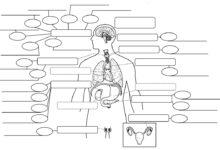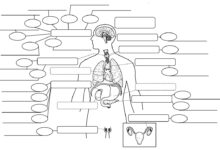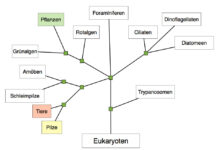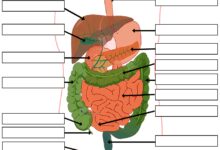System Files 101: Ultimate 7-Step Guide to Master Hidden Power
Welcome to the ultimate guide on system files—your gateway to understanding the invisible backbone of every operating system. Whether you’re a curious beginner or a seasoned tech enthusiast, this deep dive will unlock the secrets behind these critical components.
What Are System Files? The Foundation of Your OS

System files are the core components that allow an operating system (OS) to function properly. They are not just random files cluttering your hard drive—they are the essential building blocks that manage hardware, run software, and maintain system stability. Without them, your computer would be nothing more than an expensive paperweight.
Definition and Core Purpose
System files are pre-installed files created by the OS developer (like Microsoft, Apple, or Linux distributors) to ensure the computer boots up, runs applications, and communicates with hardware. These files include executable binaries, configuration settings, drivers, and libraries.
- They enable the OS kernel to interact with hardware.
- They manage user permissions and security protocols.
- They store critical system settings and boot instructions.
“System files are the DNA of your operating system—they contain the instructions that tell your computer how to live and function.” — TechOps Journal, 2023
Types of System Files by Function
Not all system files serve the same purpose. They can be categorized based on their role in the system:
- Boot Files: Such as
ntoskrnl.exein Windows orvmlinuzin Linux, responsible for loading the OS during startup. - Driver Files: Like
.sysfiles in Windows, which allow hardware components (printers, GPUs) to communicate with the OS. - Configuration Files: Files such as
registry.dator/etc/fstabin Linux that store system settings. - Dynamic Link Libraries (DLLs): Shared libraries used by multiple programs, like
kernel32.dll.
Understanding these types helps users recognize why tampering with them can lead to system failure.
Why System Files Are Critical for Stability
The stability of any computer system hinges on the integrity of its system files. These files work in harmony to ensure seamless operation, from booting the machine to running complex applications.
Role in System Boot and Initialization
When you power on your computer, the BIOS or UEFI firmware looks for the bootloader, which then loads essential system files. In Windows, this includes bootmgr and BCD (Boot Configuration Data). On macOS, the SystemVersion.plist and kernel extensions (.kext) play a similar role.
- The Master Boot Record (MBR) or GUID Partition Table (GPT) points to the boot sector.
- System files like
ntldr(in older Windows) orwinload.exeload the kernel into memory. - If any of these files are corrupted, the system may fail to boot, resulting in errors like “BOOTMGR is missing”.
For more on boot processes, visit Microsoft’s Boot Process Overview.
Impact on Software and Hardware Integration
System files act as intermediaries between software applications and physical hardware. For example, when you print a document, the OS uses a printer driver (a type of system file) to translate the document into a format the printer understands.
- DLL files provide shared functions that multiple programs can use, reducing redundancy.
- Device drivers ensure plug-and-play functionality for USB devices, graphics cards, and network adapters.
- Without proper system files, hardware may not be recognized, or software may crash unexpectedly.
“A single missing DLL can bring down an entire application suite.” — IT Pro Magazine, 2022
Common Locations of System Files Across OS Platforms
Knowing where system files are stored is crucial for troubleshooting and system maintenance. While these locations are often hidden by default, they are accessible with the right tools and permissions.
Windows: C:Windows and System32
In Windows, the primary system files reside in C:Windows and its subdirectories, especially System32 and SysWOW64 (for 64-bit systems).
C:WindowsSystem32contains core executables, DLLs, and drivers.C:Windowswinsxs(WinSxS) stores component store files for Windows updates.C:Windowsinfholds driver installation files.
These directories are protected by Windows File Protection (WFP) and require administrator privileges to modify. Unauthorized changes can trigger system instability.
macOS: /System and /Library
Apple’s macOS follows a Unix-like structure, with critical system files located in /System, /Library, and /usr.
/System/Library/contains frameworks, kernel extensions, and system preferences./Library/stores system-wide settings and third-party extensions./usr/bin/and/bin/include essential command-line utilities.
macOS uses System Integrity Protection (SIP) to prevent unauthorized modifications, even by root users. Disabling SIP is possible but not recommended for average users.
Linux: /bin, /sbin, /etc, and /lib
Linux distributions organize system files in a hierarchical filesystem standard (FHS). Key directories include:
/bin/and/sbin/: Essential binaries for all users and system administration./etc/: Configuration files for system services and applications./lib/and/lib64/: Shared libraries required for booting and running the system./boot/: Contains the kernel, initramfs, and bootloader files.
For more details, refer to the Linux Foundation’s Filesystem Hierarchy Standard.
How System Files Work: Behind the Scenes
Understanding the mechanics of system files requires a look at how they interact with the kernel, memory, and user processes. This section demystifies the behind-the-scenes operations.
Interaction with the Kernel and Memory
The kernel is the core of the OS, and system files provide the interface between it and the rest of the system. During boot, the kernel loads essential system files into RAM to execute critical functions.
- The
ntoskrnl.exefile in Windows is the Windows NT kernel, responsible for process and memory management. - In Linux, the
vmlinuzfile is the compressed kernel image loaded by the bootloader. - System files like
hal.dll(Hardware Abstraction Layer) allow the kernel to interact with hardware without knowing the specifics.
Once loaded, these files remain in memory to ensure fast access and efficient operation.
Execution Chain During Startup
The startup process follows a precise sequence where system files are loaded in a specific order:
- BIOS/UEFI performs POST (Power-On Self-Test).
- Bootloader (e.g., GRUB, NTLDR) loads the kernel.
- Kernel initializes hardware via drivers (system files).
- System services (like Windows Service Control Manager) start using configuration files.
- User space is initialized, and the login screen appears.
If any file in this chain is missing or corrupted, the process halts, often displaying a Blue Screen of Death (BSOD) or kernel panic.
Common Issues Caused by Corrupted System Files
Corrupted system files are a leading cause of system instability, crashes, and boot failures. They can result from malware, improper shutdowns, failed updates, or disk errors.
Blue Screen of Death (BSOD) and Kernel Panics
One of the most dramatic symptoms of system file corruption is the BSOD in Windows or kernel panic in macOS/Linux. These occur when the OS encounters a critical error it cannot recover from.
- Common BSOD codes:
0x0000007E(SYSTEM_THREAD_EXCEPTION_NOT_HANDLED),0x00000050(PAGE_FAULT_IN_NONPAGED_AREA). - Causes include corrupted drivers, missing DLLs, or damaged registry files.
- Kernel panics in Linux often display messages like “Kernel panic – not syncing: VFS: Unable to mount root fs”.
These errors indicate that a core system file failed to load or execute properly.
Slow Performance and Application Crashes
Less severe but equally frustrating, corrupted system files can cause sluggish performance and frequent application crashes.
- A damaged
user32.dllcan prevent windows from rendering correctly. - Corrupted
hostsfile can disrupt internet connectivity. - Malware-modified system files may inject malicious code, slowing down the system.
Users may notice increased CPU usage, freezing, or programs failing to launch.
How to Repair Corrupted System Files
Fortunately, modern operating systems provide built-in tools to detect and repair corrupted system files, minimizing the need for manual intervention.
Using SFC and DISM in Windows
Windows includes two powerful tools: System File Checker (SFC) and Deployment Image Servicing and Management (DISM).
- SFC /scannow: Scans all protected system files and replaces incorrect versions with correct ones from the cache.
- DISM /Online /Cleanup-Image /RestoreHealth: Repairs the Windows image, which SFC relies on.
To run SFC:
- Open Command Prompt as Administrator.
- Type
sfc /scannowand press Enter. - Wait for the scan to complete (can take 20-30 minutes).
- Restart the system if repairs are made.
For detailed instructions, visit Microsoft Support on SFC.
macOS Recovery Mode and First Aid
macOS users can use Disk Utility in Recovery Mode to repair disk permissions and verify system integrity.
- Restart Mac and hold
Command + Rto enter Recovery Mode. - Open Disk Utility and select the startup disk.
- Click “First Aid” to scan and repair disk errors.
- If issues persist, reinstall macOS without erasing data.
Note: SIP must remain enabled to protect system files during repair.
Linux: fsck and Package Managers
Linux administrators use fsck (File System Check) to repair filesystem corruption and package managers to reinstall system files.
- Run
fsck /dev/sda1(replace with your partition) from a live USB if the system won’t boot. - Use
apt --reinstall install <package>(Debian/Ubuntu) ordnf reinstall <package>(Fedora) to restore missing system files. - Check logs in
/var/log/for clues about which files are corrupted.
For more on Linux recovery, see The Linux Documentation Project.
Best Practices for Protecting System Files
Prevention is always better than cure. Implementing best practices can significantly reduce the risk of system file corruption.
Enable System Protection and Backups
Regular backups and system restore points are your first line of defense.
- In Windows, enable System Protection to create restore points automatically.
- Use File History or third-party tools like Macrium Reflect for full system images.
- On macOS, Time Machine backs up system files and user data.
- Linux users can use
rsyncorTimeshiftfor snapshot-based backups.
Having a recent backup allows you to restore system files without reinstalling the OS.
Use Antivirus and Malware Protection
Malware often targets system files to gain persistence or disable security features.
- Install reputable antivirus software (e.g., Windows Defender, Bitdefender, Kaspersky).
- Keep real-time protection enabled to block malicious file modifications.
- Regularly scan for rootkits that hide in system directories.
Some advanced threats, like bootkits, infect the Master Boot Record, making them harder to detect.
Avoid Unauthorized Modifications
Editing system files without proper knowledge can lead to irreversible damage.
- Never delete files from
System32or/Systemunless guided by official documentation. - Use administrative privileges sparingly and only when necessary.
- Avoid downloading “system optimizers” from untrusted sources—many are scams or malware.
“90% of system file issues stem from user tampering or third-party tools.” — CyberSec Institute Report, 2023
Advanced Topics: System Files in Virtualization and Cloud
As computing evolves, system files play a crucial role in virtualized and cloud environments, where isolation and scalability are paramount.
Virtual Machines and Guest OS Files
In virtualization platforms like VMware, Hyper-V, or VirtualBox, each virtual machine (VM) has its own set of system files.
- The guest OS runs its own kernel and system files independent of the host.
- Snapshot technology allows administrators to save the state of system files for quick rollback.
- Tools like VMware Tools install additional system files to enhance performance and integration.
Proper management ensures VM stability and security.
Containerization and Immutable System Files
Containers (e.g., Docker) use immutable filesystem layers, where system files are baked into images.
- Base images (like
alpineorubuntu:20.04) include minimal system files. - Changes are made in upper layers, preserving the original system files.
- This immutability enhances security and consistency across deployments.
For more, see Docker’s Overview.
Future of System Files: Trends and Innovations
As technology advances, the nature of system files is evolving with new paradigms in computing.
Read-Only OS and Atomic Updates
Modern OS designs like ChromeOS and Fedora Silverblue use read-only root filesystems.
- System files are immutable, preventing accidental or malicious changes.
- Updates are applied atomically—either fully succeed or roll back.
- Users install apps in containers or user spaces, not in system directories.
This model improves security and reliability.
AI-Driven System File Monitoring
Artificial intelligence is being integrated into system monitoring tools.
- AI can detect anomalies in system file access patterns.
- Machine learning models predict potential corruption before it occurs.
- Self-healing systems automatically restore files from backups when issues are detected.
Companies like Microsoft and IBM are investing in AI-powered system integrity tools.
What are system files?
System files are essential components of an operating system that manage hardware, run software, and maintain system stability. They include executables, drivers, libraries, and configuration files necessary for the OS to function.
Can I delete system files to free up space?
No, you should never manually delete system files. Doing so can cause your operating system to become unstable or unbootable. If you need to free up space, use built-in tools like Disk Cleanup or Storage Sense in Windows.
How do I know if my system files are corrupted?
Symptoms include frequent crashes, BSODs, slow performance, or error messages about missing DLLs. You can use tools like SFC (Windows), First Aid (macOS), or fsck (Linux) to scan for corruption.
Are system files the same across different computers?
While the core functions are similar, system files vary by OS version, hardware, and installed updates. Two Windows 10 machines may have slightly different system files based on updates and drivers.
Can malware infect system files?
Yes, malware often targets system files to gain persistence or disable security. This is why antivirus software and system integrity protection (like Windows Defender or SIP) are crucial.
Understanding system files is essential for anyone who uses a computer.These invisible components form the foundation of every operating system, enabling everything from booting up to running complex applications.While they are typically hidden and protected, knowing their role, location, and how to maintain them empowers users to troubleshoot issues and protect their systems..
As technology evolves, the concept of system files is adapting to new models like containerization and read-only OS designs, but their importance remains unchanged.By following best practices—such as regular backups, using antivirus software, and avoiding unauthorized modifications—you can ensure your system files remain intact and your computer runs smoothly.Whether you’re a casual user or an IT professional, respecting the power of system files is the first step toward a stable, secure computing experience..
Further Reading:









